The former coal mine which became a work of art
 Mike Bolam
Mike BolamAs relics of our industrial past go, the Crawick Multiverse is a pretty unusual one.
Once an opencast coalmine in Upper Nithsdale in southern Scotland, it is now a landscape artwork created by the late Charles Jencks.
It was officially opened 10 years ago on the longest day of the year, the summer solstice of 21 June 2015.
The hope was that it could attract international visitors and help boost businesses in nearby Sanquhar, Kelloholm and Kirkconnel.
Materials found on the site - including 2,000 large boulders - were used to create the work.
The £1m project - funded by the Duke of Buccleuch on his own land - followed in the footsteps of other works by Mr Jencks including the Garden of Cosmic Speculation, also in Dumfries and Galloway.
The artist - who died in 2019 - said at the time of the opening: "This former opencast coal site, nestled in a bowl of large rolling hills, never did produce enough black gold to keep digging.
"But it did, accidentally, create the bones of a marvellous ecology.
"This work of land art, created primarily from earth and boulders on the site, celebrates the surrounding Scottish countryside and its landmarks, looking outwards and back in time."
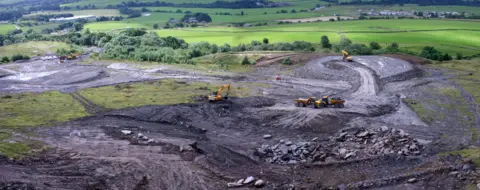 Steve Chettle Arts UK
Steve Chettle Arts UKThe Duke of Buccleuch was delighted with the outcome.
Speaking in 2015, he said the site had become a "brutal eyesore" and an "embarrassment".
So when his "neighbour from down the road" - Mr Jencks - had offered to transform the area, they were "just over the moon".
Reflecting on it today, he said he was still impressed with the final outcome.
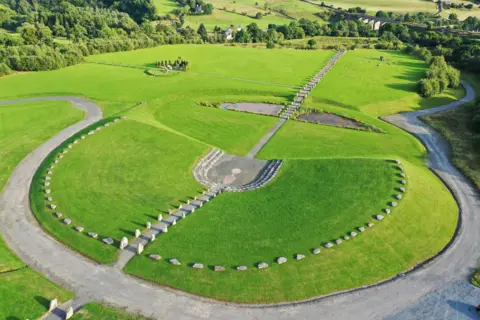 Mike Bolam
Mike Bolam"The vision of Charles Jencks, which I supported, extended far beyond its original purpose of removing a derelict opencast mine eyesore to the creation of an internationally-recognised work of land art," he said.
"Charles's ambition to represent in artistic form elements of the vast cosmos in which our planet is but a minute speck, included galaxies, superclusters and the multiverse itself.
"He sought the input of the leading international scientists in the field including Lord Rees, the Astronomer Royal and won their admiration."
He praised the work of the trust which now runs it and wished them all the best for their second decade.
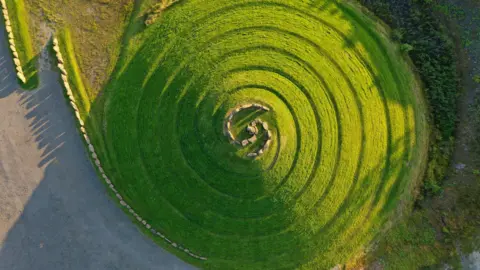 Mike Bolam
Mike BolamTen years on, though, what has the impact been?
Ronnie Bradford, community development officer at the nearby Sanquhar Enterprise Company, said it had brought "several benefits" to the area.
"The unique and inspired transformation of the former opencast coal mine has attracted visitors, supporting local businesses, increasing tourism in the area and raising the profile of Upper Nithsdale," he said.
"Local residents have been hired for roles at the site with local trades being engaged in developing the site, ensuring good community involvement in its operations."
He said it also hosted school visits, community group trips and promoted affordable access for nearby residents.
"The open-air venue hosts festivals, performance art and music events, bringing large-scale entertainment and social opportunities to the region often at 'off season' times of the year."
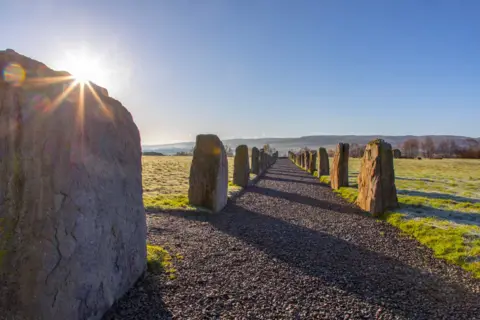 Mike Bolam
Mike BolamThe site now attracts about 10,000 visitors a year and has seen improvements carried out over the past decade to upgrade visitor facilities.
A 55-acre site requires plenty of maintenance with a team of four local young people in "front of house" roles, managed by operations manager Brian Johnson and supported by volunteer trustees.
It was also recently designated as a significantly important designed landscape by Historic Environment Scotland.
A special celebration took place on Saturday to mark the solstice and also reflect on its first 10 years.
Gillian Khosla, who chairs The Crawick Multiverse Trust, is proud of what has been achieved but also has an eye on the future.
"We stand on the shoulders of the artist and skilled workers who created and now develop this unique site, which has repurposed a derelict and depleted coal mine into an important asset for Upper Nithsdale," she said.
"A decade on from opening, now is the time to plan for the next decades to further develop our audiences and increase biodiversity.
"Our aim is to be sustainable, both environmentally and financially."
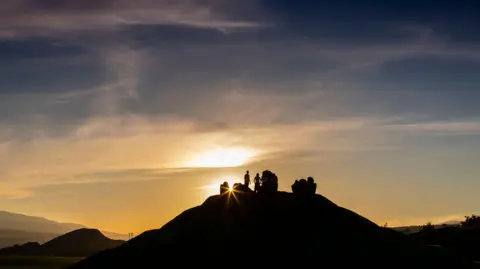 Mike Bolam
Mike BolamShe said that future could be shaped by others and they were open to ideas of how to develop the site.
In the meantime, they hope visitors will flock to their solstice celebrations and other summer events.
"Please continue to visit and share the magnificence of the Multiverse with your friends," she added.
It certainly appears to have left its past as an industrial eyesore a long way behind.
